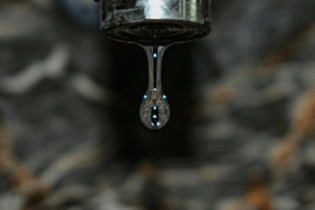Fracking in the US has led to a greater reduction in carbon emissions than all the wind turbines and solar panels across the entire globe put together. This is the stark fact presented at a meeting at the Council of Europe in Strasbourg recently.
Chris Faulkner, who is chief executive of Breitling Energy Corporation based in Texas, explained: “Fracking has succeeded where Kyoto and carbon taxes have failed. Due to the shale boom in the US, the use of clean burning natural gas has replaced much more polluting coal by ten per cent. In 2012, the shift to gas has managed to reduce CO₂ emissions by about 300 megatonnes (Mt). “Compare this to the fact that all the wind turbines and solar panels in the world reduce CO₂ emissions, at a maximum, by 275 Mt. In other words, the US shale gas revolution has by itself reduced global emissions more than all the well-intentioned solar and wind in the world.” The economic impacts of fracking and shale gas are also indisputable: as natural gas prices in the European Union have doubled since the year 2000, US prices have fallen by about 75 per cent in the past few years. Annually, the global solar and wind subsidies cost $60 billion, whereas the US is saving at least $100 billion from cheaper energy The Economist predicts that by 2020 the fracking revolution will have added 2 to 4 per cent ($380–$690 billion) to American GDP and created more than twice as many jobs as car makers provide today. US GDP today is about $16 trillion, and US car makers employ about 800,000 people. Chris Faulkner continued: “Many countries in Europe, and across the world, have similar opportunities to reduce their carbon footprint, and to experience the same economic benefits.” “These are not opportunities governments should overlook, or discount, as carbon reduction targets will not be achieved through renewables or any other current energy generation technology. “But shale is not a silver bullet, it is a stop-gap fuel while other energy generation technologies are developed, which will replace carbon-based fuels in the coming years. “Opponents of fracking and shale exploitations cite various risks. Yet a million and a half wells have been fracked in the US since 1947 and 95 per cent of all wells in the US are fracked today. It is a very safe method of exploration and production. Fracking occurs at several thousand feet below freshwater aquifers. It is virtually impossible for any of the fracking fluid to climb back up through the rock formations between the shale gas deposits and the aquifer.“As with any energy source,” added Chris Faulkner, “there are risks. But if there is proper regulation and enforcement, those risks can be managed and minimized. In many states in the US there are effective regulations and monitoring in place.”
Chris Faulkner was invited to present at the Council of Europe by UK MP David Davies. The ‘fringe’ meeting was attended by over 30 Council of Europe members from across Europe, including eight UK MPs. “The UK is the only country in Europe which is progressing with shale exploration,” added Chris Faulkner. “The rest of Europe is watching the UK very closely to see what happens. “The UK government is making every effort to get this right, albeit without much help from the shale industry which has spectacularly failed to properly engage with governments and, more importantly, with the public at large. “The handful of companies operating in the field have not made any real effort to engage with local communities around sites, enter into proper discussions with local councils, or discussed fracking with environmentalists, allowing them free range to influence public perceptions using inaccurate, misinterpreted or exaggerated information mainly from the US experience. “The industry has also failed to come forward with any suggestions for compensating landowners and local communities, seemingly leaving it to government to regulate. “The UK government has suggested a lump sum payment and then 1 per cent of revenue going forward. This is very limited compared to the model that operates in the US where landowners can get over 20 per cent of revenue over the life of a well.”







